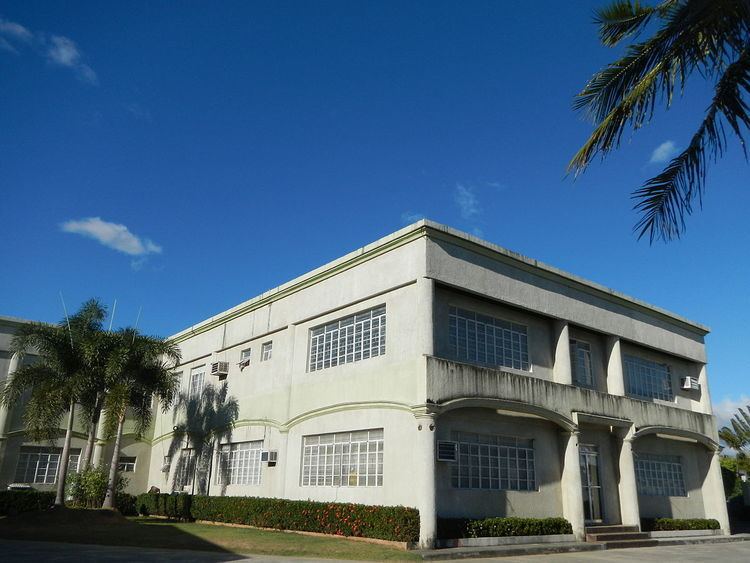Country Philippines District 3rd District Barangays Population 59,343 (2010) | Province Nueva Ecija Founded 1760 Area 287 km² Local time Tuesday 1:29 AM | |
 | ||
Region Central Luzon (Region III) Weather 24°C, Wind S at 5 km/h, 81% Humidity Neighborhoods Pesa, Santor, Malibago, Larcon, Tugatug, Brgy. Macabaclay | ||
It s more fun in bongabon nueva ecija philippines tourism campaign
Bongabon is a second class municipality in the province of Nueva Ecija, Philippines. According to the 2010 census, it had a population of 59,343 people. It has an area of 28,352.90 hectares (70,061.5 acres), and is the leading producer of onion in the Philippines and in Southeast Asia.
Contents
- It s more fun in bongabon nueva ecija philippines tourism campaign
- Map of Bongabon Nueva Ecija Philippines
- Masinag 1cv onion production bongabon nueva ecija
- Barangays
- History
- Philippine Revolution under the Spanish Colonial Period
- Philippine American War and the American Colonial Period
- World War II under the Japanese Occupation
- Art and Culture
- References
Map of Bongabon, Nueva Ecija, Philippines
Each barangay in Bongabon has its own fiesta. The town fiesta, celebrated annually on the 1st to 2nd week of April, is known as the Sibuyasan Onion Festival.
Masinag 1cv onion production bongabon nueva ecija
Barangays
Bongabon is politically subdivided into 28 barangays, listed here with their 2010 populations:
History
The Augustinian missionaries who preached Catholicism in Pampanga extended their outposts into what is now the province of Nueva Ecija by following the Rio Grande dela Pampanga. Thus, Santol (present day Barangay Santor) was part of Pantabangan and established in 1659. In 1760, Bongabon was named as a town and parish under the patronage of St. Francis of Assisi.
Bongabon was the first capital of Nueva Ecija.
Philippine Revolution under the Spanish Colonial Period
When the Philippine Revolution began on 1896 to 1898 against Spain. The Philippine Revolutionary and Republican troops with the aid of Katipunero rebels invaded the municipal town of Bongabon and fought the Spanish Colonial forces and started the Siege of Bongabon. The Filipino revolutionary troops and Katipunero rebel fighters captured the municipal town after the siege forcing the Spanish troops to retreat.
Philippine-American War and the American Colonial Period
With the outbreak of the Philippine–American War on 1899 to 1902, the town saw the arrival of American troops which fought the Filipino revolutionary troops and Katipuneros in the Battle of Bongabon on 1899. In the ensuing battle, the town was captured by the American troops.
World War II under the Japanese Occupation
The outbreak was start the Second World War, Japanese planes was crushed to invaded the town municipality in Bongabon on December 1941 under the Japanese Invasion and through the occupied by the Imperial Japanese forces was entering the town on 1942 and begins the Japanese Occupation. The active of the general headquarters and garrison bases of the Imperial Japanese Armed Forces was established on 1942 through the combined Allied United States and the Philippine Commonwealth military and recognized guerrilla raid and captured on 1945 and they stationed in the municipality of Bongabon during the Japanese Occupation.
Started the conflicts and insurgencies during the Japanese Occupation on 1942 to 1944. Many several various guerrilla fighter groups and the Hukbalahap Communist resistance at the municipal town in Bongabon was side by side and fought attack to attack from the local military and guerrilla conflicts and arrival and helping aided of all stronghold Filipino soldiers and officers of the ongoing Philippine Commonwealth Army and incoming Philippine Constabulary 2nd Infantry Regiment units and against by the Imperial Japanese troops and Makapili militia groups. After the insurgencies on 1944, many guerrilla fighters and Hukbalahap resistance was they retreated by the Japanese soldiers and air raid planes was recaptured the municipality in Bongabon. Before the combined force of the Filipino troops of the Philippine Army and Constabulary units and the American troops of the U.S. Armed Forces units with aiding guerrilla groups and Hukbalahap fighters was beginning the liberation on 1945 since the Battle of Bongabon.
Some of all outgoing guerrillas and non-combanant civilians are found arrested, tortured, marches and killed by the Imperial Japanese troops. When the all local outgoing guerrillas and civilians was torturing and killed by the Japanese hands at the Imperial Japanese military general headquarters, garrisons and concentration camps in Bongabon.
Since the liberation and the Battle of Bongabon on 1944 to 1945 between the fought of the combined Filipino and American troops and the recognized guerrillas with the Japanese troops. When the combined military force of the Filipino troops and officers of the 2nd, 22nd and 26th Infantry Division of the Philippine Commonwealth Army and 2nd Infantry Regiment of the Philippine Constabulary and the American troops and officers of the U.S. Armed Forces units was found liberated and invaded the town municipality of Bongabon and aiding various guerrilla groups and Hukbalahap communist fighters and defeats Imperial Japanese troops and Makapili militia groups and ending aftermath of World War II. The casualties at the fall of main battle of Bongabon was over 14,200 Filipino troops and guerrillas killed and wounded in action, 6,000 American troops killed and wounded in action, 68,000 Japanese troops and Makapili militias killed, wounded and captured in action and over 28,000 outgoing guerrillas and civilians killed by the Japanese.
Art and Culture
Sibuyas Festival is celebrated as a form of thanksgiving to Saint Francis de Assisi every 9th of April, and a way to promote and show their town as one of the largest producers of onion in Asia.
